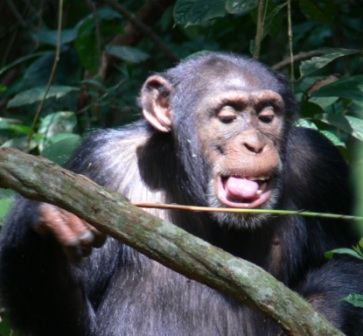Today we published an opinion piece in Biology Letters on primate material culture.

Today we published an opinion piece in Biology Letters on primate material culture. We couldn’t resist making a podcast on this topic, and interviewed the lead author, Dr Kathelijne Koops, who kindly invited us to the University of Cambridge to speak with her about her fascinating research. This video interview is available online via The Royal Society’s YouTube channel.
We’ve put a fantastic image of a male chimpanzee cracking nuts on our cover (below), courtesy of Dr Koops and we were lucky enough that she and her colleagues provided us with not one, but several great photos to use. Sadly, we can’t put them all on the cover, but that doesn’t stop us from sharing some of our favourites with you here. Enjoy!
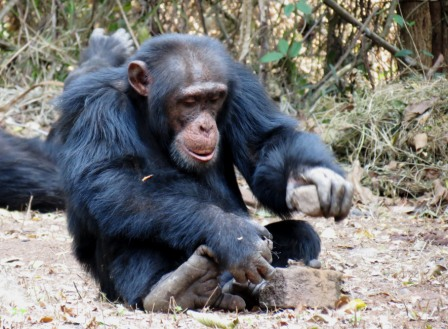
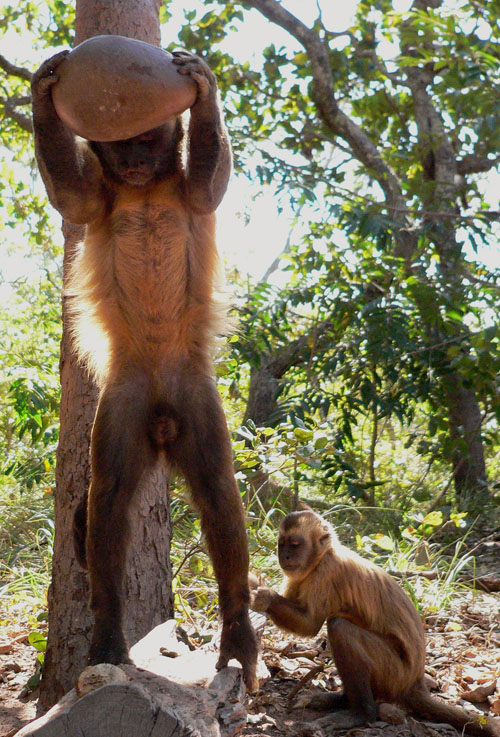
This lovely image, courtesy of co-author Elisabetta Visalberghi shows an adult male capuchin monkey cracking a nut lifting a large and heavy rock above his head. A juvenile is nearby very interested in what he does. In primate the acquisition of tool use is socially influenced. Youngsters are not only interested in the behavior of the tool user but also by the stone and anvil tools and the remnants of cracked nuts.
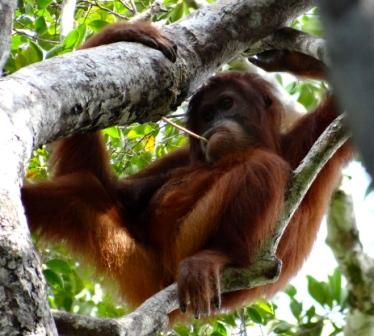
Orangutans also use tools, but rather than using stones for cracking nuts, they use sticks to extract seeds from beds of stinging hairs or products of social insects form tree holes. A young orangutans is exploring a tree hole in this photo (courtesy of the Anthropological Institute, University of Zurich).
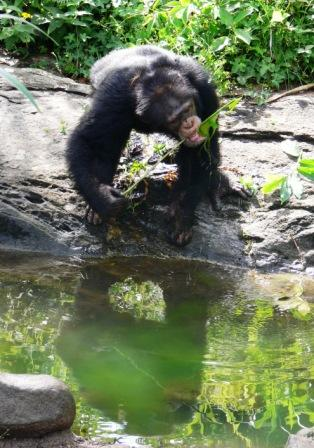
Chimpanzees create tools from sticks for collecting algae from ponds (as shown above) or extracting ants from their nests to eat them (pictured below). The army ants these chimpanzees feed on can be quite ferocious, so using tools instead of their hands to remove them from the nest is a clever move to avoid the ants’ painful bites. Both images were taken at Bossou in Guinea (West Africa), courtesy of Dr Koops.
